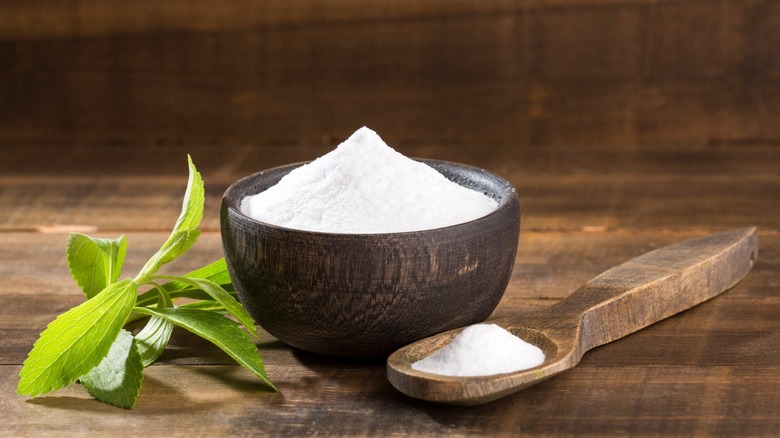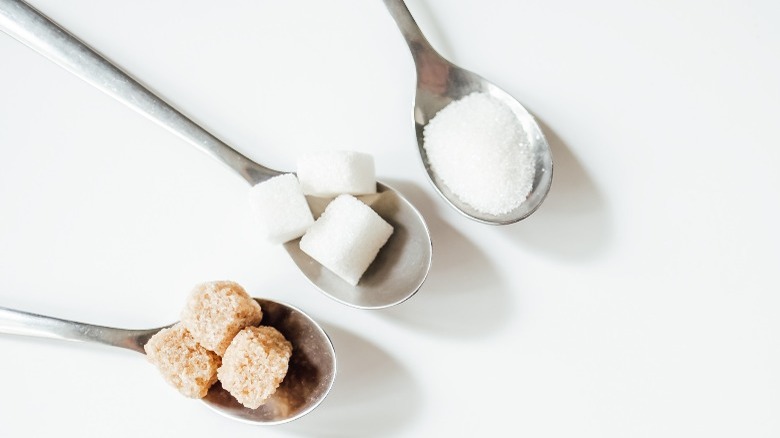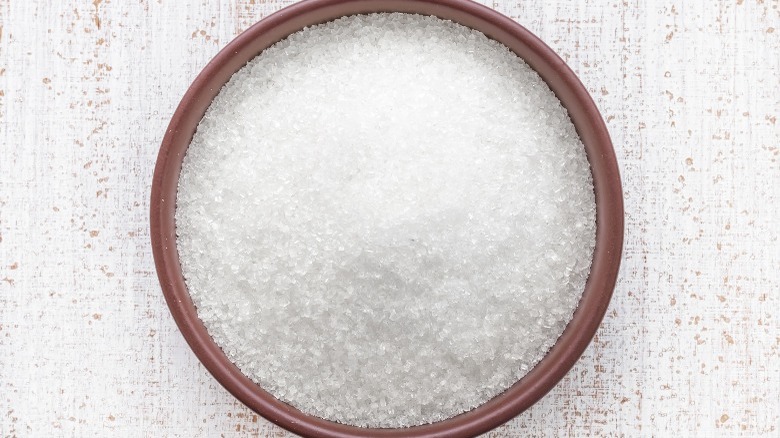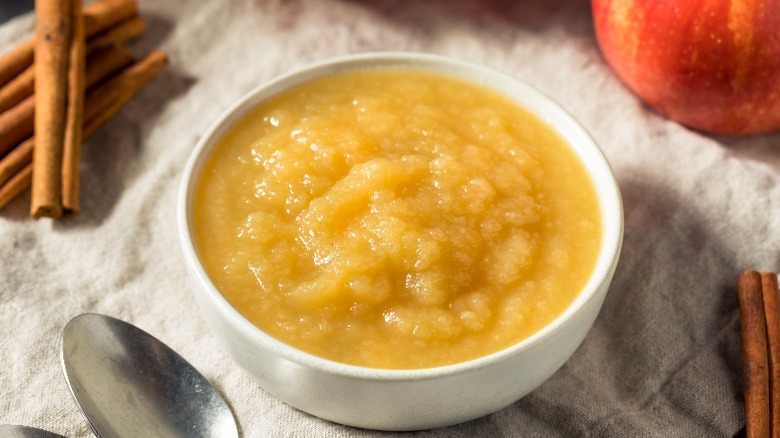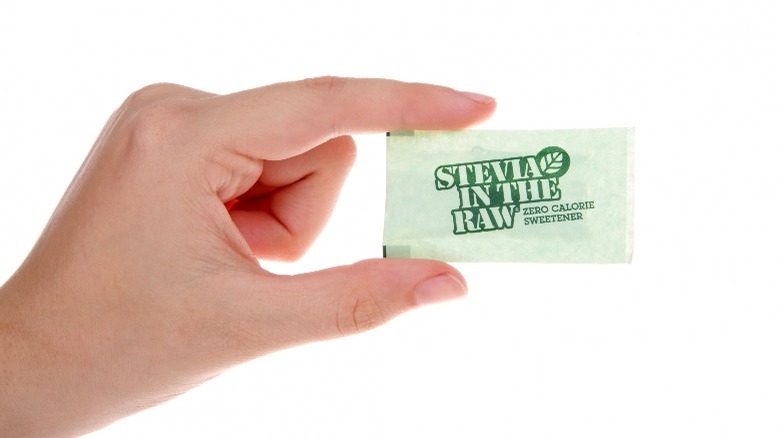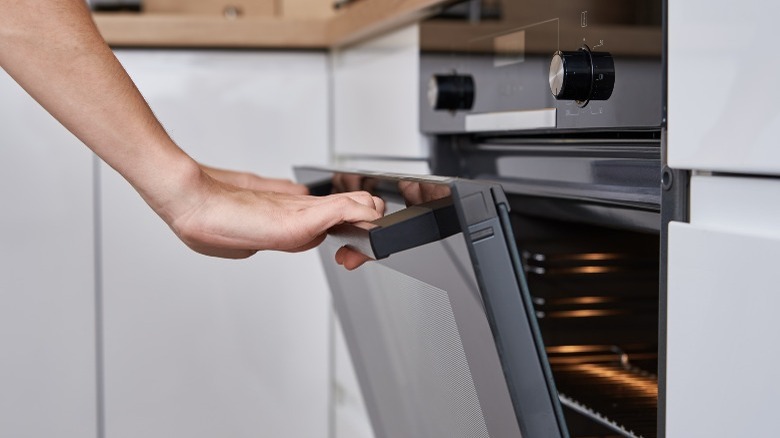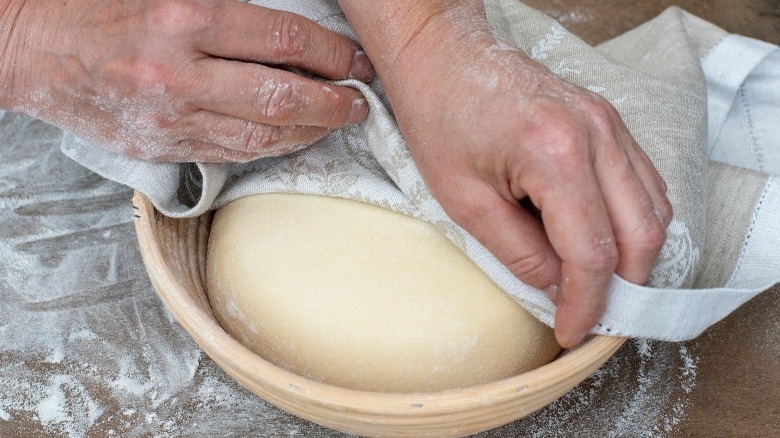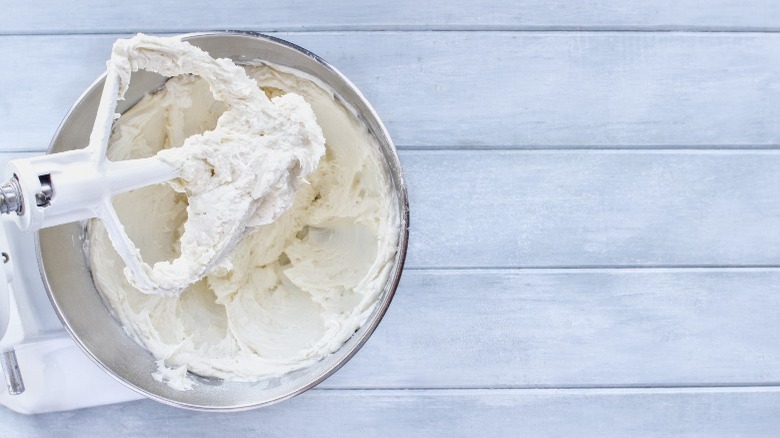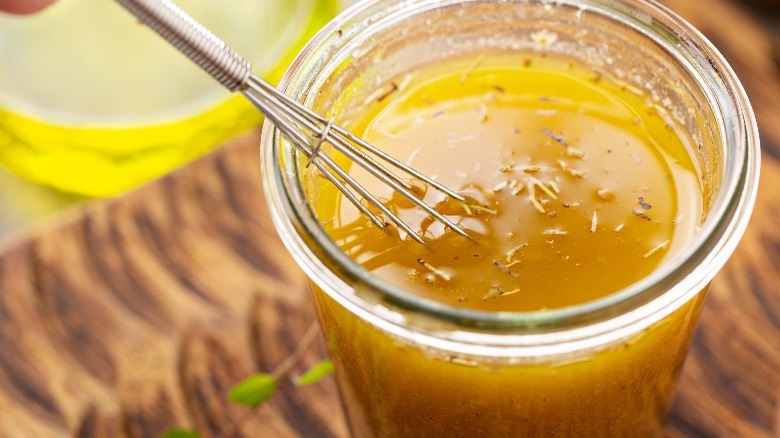8 Tips You Need When Cooking With Stevia
Let's face it, so many of us have a pesky sweet tooth that no amount of indulgent sweets can fix, but too much sugar can be detrimental to your health. Luckily, non-sugar sweeteners like stevia make it possible for your taste buds to continue enjoying their favorite flavor without additional calories.
Before you run to your nearest supermarket to purchase stevia, you will want to learn a little more about this natural ingredient. Cooking with stevia is very different than cooking with regular table sugar, but that's not to say it can't be done. As long as you're equipped with the right tips, you'll have no problem getting through most recipes.
In its most natural form, a blossomed stevia plant is covered with sweet-tasting leaves which boast remarkably high amounts of sweet compounds, like stevioside and rebiana (per Stevia.org). Although growing it yourself is possible, you can purchase products that are made with rebaudioside A (or Reb-A), which is extracted from the stevia leaves (per Healthline).
Being 30-450 times sweeter than sugar, we know that stevia can bring on the sweetness in many dishes (per Stevia.org). But, since the chemical makeup significantly differs from sugar, be sure to read through our top tips and tricks for cooking and baking with this non-nutritive sweetener.
Use accurate conversions
If baking is your thing, then you know there is something special about making quick breads and muffins during the cold months of winter and crafting tasty shortcakes in the hot days of summer. One thing all these treats have in common is the sweetness overload, thanks to our good ole pal Mr. Sugar. But when you have kicked sugar to the curb, you'll need to replace it with something equally sweet; otherwise, you'll miss out on mega flavor.
You can purchase stevia in a few different forms, including liquid extract, powdered versions, and sometimes whole leaves (per Stevia.org). If you consider yourself a botanist with a passion for cultivating culinary herbs, then feel free to grow stevia at home too.
Stevia makes for an excellent replacement, but because it's way sweeter than sugar, you want to avoid going cup for cup. When following proper conversions, you will need much less stevia than sugar. You only need 5 teaspoons of stevia for every cup of sugar. The difference is even more significant when using the liquid stevia extract. In a recipe, you would use 1/2 teaspoon of liquid stevia for every 3/4 cup of sugar (per Stevita Naturals).
The conversions are based on sweetness levels, but personal preference also makes all the difference. With such a vast difference in volume, you're probably wondering what to do about all that missing bulk. Luckily, there's a fix for that.
Consider using 1:1 sugar replacements when baking
When you take a full cup of sugar out of a recipe and replace it with a measly five teaspoons of powdered stevia, you will undoubtedly create a different product. Since you have lost a significant amount of mass in your batter or dough, your results will look and taste different and lend a completely distinct texture.
That's because sugar does more than sweeten cakes and cookies; it provides structure, adds color (thanks to caramelization), and delivers a desirable texture. Beyond flavor, sugar is crucial in baking. While there is no perfect way to substitute sugar and still meet those exact results, replacing that vacant volume is essential if you want something palatable.
One of the easiest ways to do so is by using a 1:1 sugar replacement. According to WhatSugar, 1:1 sugar replacements are convenient sweeteners (sometimes made with stevia) that measure equally to sugar by volume. That means if your recipe calls for 1 cup of sugar, you can use 1 cup of 1:1 sugar replacement instead. This only works when measured by volume, not by weight.
Typically, these sugar replacements are made using a blend of fillers like maltodextrin or erythritol and a sweetener like stevia or aspartame. Several brands offer these sugar replacements today, as sugar substitutes like stevia continue to rise in popularity. Brands like SweetLeaf use stevia.
Add bulk with other ingredients
If you love your confections, cookies, and cakes for their moist centers and immaculate textures, then you should know removing sugar from the equation will change everything. While adding bulking agents to make up for sugar loss is essential, sometimes, 1:1 sugar replacements aren't readily available.
If you're in the mood to bake, but a trip to your local supermarket isn't in your plans, there are other ways to make up for the lost bulk when replacing sugar with stevia. According to Stevita Naturals, when you replace one cup of sugar with stevia, you should add approximately 1/3 cup of other liquid ingredients to compensate for the loss in volume.
Some ingredients that work well for this include apple sauce, yogurt, whisked egg whites, or pureed pumpkin. Your stevia already has the sweetness level covered, so to keep your sugar intake down, remember to use sugar-free applesauce or low-sugar yogurt if you decide to use these bulking ingredients.
Replacing sugar with stevia without adding bulk will result in small, flat, and crispy cookies, so avoid overbaking. Instead, consider baking your dough in a square pan and serving them as cookie bars instead of baking them individually. When making cakes, Stevita Naturals recommends whipping egg whites into stiff peaks and then folding them into the batter to help retain texture.
Less is more
Using accurate conversions and replacing lost sugar volume are two key considerations to follow when baking with stevia. Still, like most food-related specifics, a matter of preference is important too.
When cooking or baking, consider finding a similar recipe that uses stevia instead of sugar to minimize the efforts of converting ingredients yourself. Otherwise, we recommend using the conversion chart as a guideline. That's because your adoration of sweetness might differ from someone else who may be a little more sensitive to the taste.
When looking at conversions, it's also wise to taste test in small amounts until you reach the desired sweetness level. This is easier in cocktails, smoothies, cold beverages, and batters that don't contain raw ingredients. When working with raw ingredients, follow the conversion chart, then try your baked treat once it's out of the oven, and jot down a note about the sweetness. That way, the next time you make the recipe, you can make adjustments if needed.
"Less is more" is always a good rule of thumb when cooking with stevia for health reasons. Some researchers claim that the intense sweetness in stevia causes some people to crave sugary foods more, which may lead to undesirable and opposing health outcomes (via PubMed). According to Healthline, many also claim that stevia has a bitter aftertaste. So if you're new to cooking with stevia, start small and work your way up until you reach the right touch of sweetness.
Keep track of high temperatures
Sugar and heat work together to create delicious variations of sauces, confections, and many other sweet treats. When you start working with sugar substitutes in place of white or brown sugar, results change dramatically and can even become potentially harmful.
In fact, one study determined that sucralose may not be thermally stable or safe, and heating it could cause the production of potentially toxic compounds (via PubMed). So, if you plan on cooking and baking with sugar replacements, keep sucralose out of the pantry, and stick to natural sweeteners like stevia instead.
Unlike other sugar replacements, stevia is considered heat stable up to almost 392 F, according to Ever Stevia. So you should have no issues baking a cake or cooking up a one-pot casserole to make life much easier. Turning the oven to over 400 F is excellent when you're roasting veggies or rushing to get dinner on the table. However, if stevia is in your recipe, keep in mind that it is not heat-stable over 392 F and should not be used in these high-heat cooking applications.
Let your yeast breads rise longer
Most of us love eating fresh warm bread, but baking it is a different game than just slathering butter over a slice and devouring it. With so many types of bread, each unique in their own way, there's always something to learn about preparation and baking methods.
For example, yeast often needs to be activated to ensure it's still alive and will make your bread rise properly. One misconception about yeast and bread making is that you need to add sugar to help the yeast activate. While it definitely helps to add a small amount of sugar to jumpstart the process, you technically don't need to add sugar. That's because bread has a unique way of turning the flour's starch into sugar and will eventually rise; it will just take longer (via King Arthur).
So if your favorite dinner rolls recipe calls for a pinch of sugar, just omit it and remember that the rising process will take longer than if sugar was used. Stevia comes into play when your bread needs just a touch of sweetness. According to King Arthur, sugar enhances the flavor of the bread, so feel free to use a tiny amount of stevia if you'd like your loaves to boast a touch of sweet richness.
Frosting needs additional ingredients to work
When you think about recipes like buttercream frosting, which is mainly made up of powdered sugar and butter, you have to wonder how stevia comes into play. Considering the differences in sweetness, replacing a few cups of confectioner's sugar with stevia won't work. If you go cup for cup, your results will be unbearably sweet. If you follow conversions, your frosting will be flat, sad, and pretty much taste like sweetened whipped butter.
For a stable, sugar-free frosting, you'll have to look to other ingredients to help reach desired results. Cream cheese is an excellent choice for several reasons. It's delicious; it whips up beautifully and offers a richness that's perfect for cakes and cupcakes. Add small amounts of powdered or liquid stevia into the mix, and you'll be ready to go.
With a touch of stevia, whipped cream also does the trick in lighter cakes made with fresh fruit. For the closest resemblance to buttercream frosting, KetoConnect recommends using a 1:1 sugar replacement in the powdered form. You can further sweeten it with a few drops of liquid stevia.
Balance acidic ingredients and temper saltiness
A homemade salad dressing like a scratch vinaigrette turns a boring salad into a bright and beautiful one. As long as you have the right components at home (you probably do), you should have no issue whipping one up for your lunch.
A solid vinaigrette should contain fat like olive oil, an acid like vinegar or lemon juice, salt, and a touch of sweetness using an ingredient like maple syrup, table sugar, and, you guessed it, stevia. From cool hijiki summer slaws to light Waldorf salads, there are several salad dressing recipes that prove stevia can help enhance a dressing with ease (via Stevia.org).
Wondering why sweet ingredients (like sugar and sweeteners) even belong in a salad dressing? That touch of sweetness does a fabulous job of balancing acidity and bitterness. That's why Cole slaw dressing is sweet; the creamy sweetness helps counter the bitter-tasting raw cabbage nicely.
Sweet ingredients like sugar and stevia also do a fine job of tempering saltiness when there's too much salt in your salad dressing. So next time you need to dull down that briny vinaigrette, add a pinch of stevia and enjoy.
